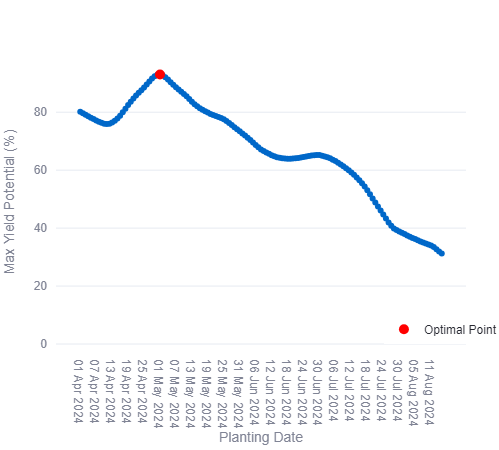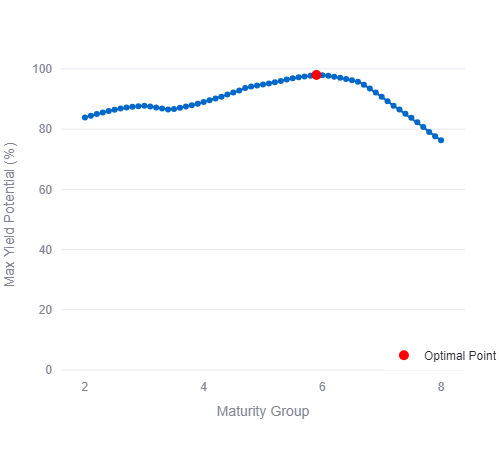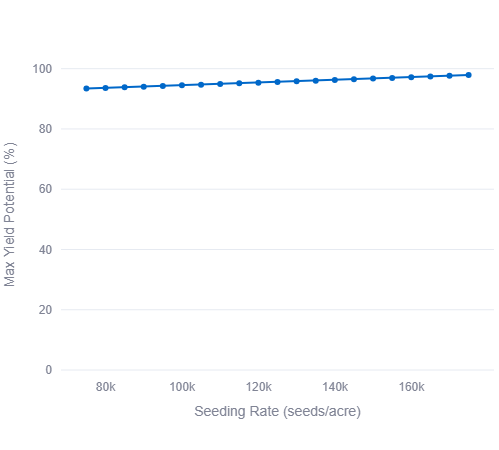Delaying Launch of Dynamic Soybean Decision Support Tool
go.ncsu.edu/readext?997233
en Español / em Português
El inglés es el idioma de control de esta página. En la medida en que haya algún conflicto entre la traducción al inglés y la traducción, el inglés prevalece.
Al hacer clic en el enlace de traducción se activa un servicio de traducción gratuito para convertir la página al español. Al igual que con cualquier traducción por Internet, la conversión no es sensible al contexto y puede que no traduzca el texto en su significado original. NC State Extension no garantiza la exactitud del texto traducido. Por favor, tenga en cuenta que algunas aplicaciones y/o servicios pueden no funcionar como se espera cuando se traducen.
Português
Inglês é o idioma de controle desta página. Na medida que haja algum conflito entre o texto original em Inglês e a tradução, o Inglês prevalece.
Ao clicar no link de tradução, um serviço gratuito de tradução será ativado para converter a página para o Português. Como em qualquer tradução pela internet, a conversão não é sensivel ao contexto e pode não ocorrer a tradução para o significado orginal. O serviço de Extensão da Carolina do Norte (NC State Extension) não garante a exatidão do texto traduzido. Por favor, observe que algumas funções ou serviços podem não funcionar como esperado após a tradução.
English
English is the controlling language of this page. To the extent there is any conflict between the English text and the translation, English controls.
Clicking on the translation link activates a free translation service to convert the page to Spanish. As with any Internet translation, the conversion is not context-sensitive and may not translate the text to its original meaning. NC State Extension does not guarantee the accuracy of the translated text. Please note that some applications and/or services may not function as expected when translated.
Collapse ▲We have been targeting a public release of our dynamic soybean grower decision support tool which would allow producers to identify their location within the state and the tool would make predictions on the best planting date, maturity group, and seeding rate combinations to use across our diverse soybean production scenarios. These predictions would be made using field-based data collected from 2019-2023 and AI-based modeling.
Originally, we had targeted a release date of early April so NC soybean growers could use the tool to make planting decisions for the 2024 season. We have had a dedicated team of computer scientists, IT experts, and agronomists working alongside growers and Extension Agents to meet this target, however we feel the tool needs more work before public release. NC State Extension takes the responsibility of providing NC growers with information very seriously and we don’t want to provide access to the tool until we have unwavering confidence in the production predictions made across the state.
We will be working over the next few months to improve the modeling that is running the tool, including a plan to ground-truth the model with producer-data, so that the tool can be released in the fall and fully operational to help make maturity group selection, planting date, and seeding rate decisions for planting in 2025.
We appreciate your patience as we strive to use new tools and innovative strategies to provide NC growers with the most robust, accurate, and user-friendly access to information.
In the meantime, we want to reiterate that the research-based information derived from the field trials conducted across the state at 20 sites from 2019-2023 that drive the tool are available in a variety of formats. Highlights of that data as well as links to deeper dives are provided below.
Planting Date:
- In general across the state, the optimal planting range for soybean lies somewhere between mid-April and mid-May, with Tidewater region producers having more flexibility to begin planting in early April and who also begin to lose yield when planting dates are delayed past the first week of May while producers in other areas of the state can generally plant into later May without yield implications
- In all regions of the state, we have seen yield loss from soybean planting dates prior to early April regardless of maturity group. This occurs for a variety of reasons including limited height before moving into reproductive development, pest pressure differences early in the season, and seed quality issues on the backend of the season for <MG6 varieties.
- In these studies, we have consistently seen that delaying planting past mid-May has negative yield implications, with yield loss from 0.45-0.87 bu/A/d depending on region and maturity group. Read more in this Extension Portal Post. Note that all these trials were planted fallow and we will be doing subsequent work to investigate how wheat residue influences yield loss from delayed planting in soybeans.
- Figure 1 highlights an example from the tool showing the relationship between planting date and maximum yield potential for Edgecombe County for selected relative maturities 4.5-6.0.
- Read more about the relationship between planting date and soybean yield in this Extension Portal Post.
Maturity Group:
- Across the state when optimal planting dates are used, the relative maturity that optimizes yield is somewhere between 4.5-5.5, with a shift towards the earlier maturities in the Tidewater region. As expected, seed quality risks are present when planting earlier than a late MG5 before mid-May in North Carolina due to the hot and wet weather that can co-inside with physiological maturity, so those risks must be weighed with the yield benefits of using these early maturing varieties. As a reminder, you cannot mitigate all seed quality issues through aggressive mid-season pest management as outlined in this Extension Portal Post.
- One of the most consistent data-driven recommendations that has come from this work is that producers have a lot of flexibility with maturity group selection in soybean planting situations in mid-June and mid-July. We have consistently seen similar yields of MG4-7 varieties planted in mid-June and MG5-7 varieties planted in mid-July, so the old rule of thumb that the later you plant, the later maturing variety you need to use no longer holds in our environment. Read more in this Extension Portal Post.
- Figure 2 highlights an example from the tool showing the relationship between soybean relative maturity and maximum yield potential for Beaufort County with selected planting dates of June 10-14 (double crop). You can see little impact of relative maturity group on yield from ~MG4-7.
Seeding Rate:
- A broad general conclusion from this work verifies what we know about soybeans; they are very plastic across seeding rates and therefore seeding rate generally has minimal impact on yield when >75,000 plants/A stands are achieved.
- When using earlier soybean maturity groups (II-IV), higher seeding rates (+20,000-25,000 seeds/A) were often needed to maximize soybean yield than when using later soybean maturity groups (V-VIII).
- On average, for all these planting dates and maturity group combinations, the seeding rate that maximized revenue was 18,000 seeds/A lower than the seeding rate that maximized yield.
- Figure 3 shows the same example from the tool where planting dates of June 10-14 and MG 5.0-5.5 was selected for Beaufort County. You can see minimal impact of soybean seeding rate on maximum yield potential even at this later planting date. Additionally, the tool also considers soybean seed cost and soybean selling price/bu in considering optimal seeding rates for use across our diverse production scenarios
- Read more about the relationship between soybean seeding rate and yield in this Extension Portal Post.





